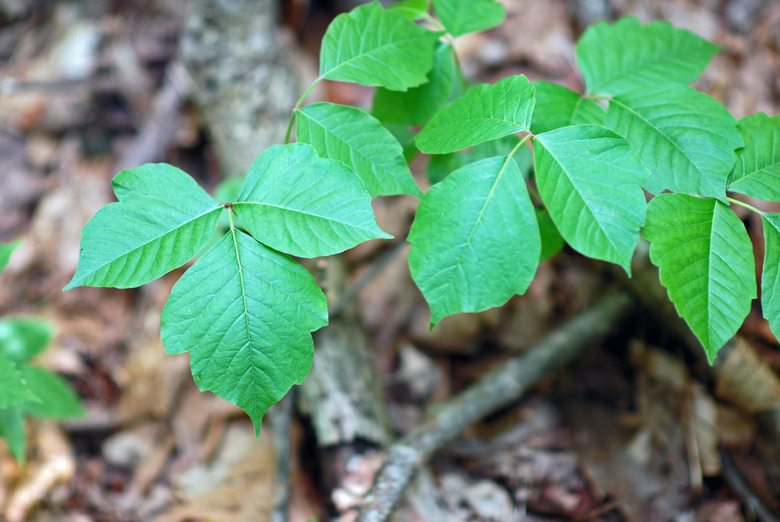What Is Black Spot Poison Ivy?
We may receive a commission on purchases made from links.
Common poison ivy (Toxicodendron radicans, USDA zones 4-10) belongs to a genus of woody plants that includes different types of poison oak, poison sumac, and an additional species of poison ivy. You can recognize these plants by the fact that their leaves always grow in groups of three, and you should stay away because unless you happen to have immunity; direct contact results in long-lasting, incredibly itchy rashes. Raised red welts develop on exposed parts of the skin, and in severe cases, these welts can turn black, which is a condition known as black spot poison ivy.
Tip
Black spot poison ivy is a condition where black spots appear on the skin after exposure.
Urushiol Causes the Itching
Urushiol Causes the Itching
The substance in the Toxicodendron genus that causes the uncomfortable allergic reaction is an oil called urushiol. The name comes from the popular name of the Japanese lacquer tree (Toxicodendron vernicifluum, zones 9-11), which is urushi, and as you might expect, any oil that can harden into lacquer is going to hang around on the skin for a long time. It doesn't evaporate or get absorbed as other oils do and basically has to wear off, which is why itching from poison ivy goes on for such a long time.
Because of the danger of allergic reaction, which can occur even by breathing the vapor, harvesting of urushiol oil in Asia has traditionally been accomplished by trained and presumably immune workers. The oil retains its irritating qualities indefinitely, and it's even possible to have an allergic reaction by being in contact with an old piece of Asian lacquerware. You can also be exposed by touching garden tools that have been in contact with urushiol.
Urushiol on Top of Urushiol
Urushiol on Top of Urushiol
Exposure to urushiol typically causes red welts accompanied by intense itching, and as everyone who has ever been exposed knows, if you scratch the welts, the itching gets worse. That's because you can't remove the tiny particles of oil with your fingernails, and by scratching, you only drive them deeper into the pores of your skin. As the body sheds skin cells through normal processes, it also sheds the urushiol particles, and the itching eventually stops.
If exposure has been severe, black spots or lines appear on the welts, which are probably caused by the addition of more urushiol to existing welts. These are known as black spot poison ivy, but they can occur after exposure to any species that contains urushiol. The condition could just as correctly be called black spot poison oak or black spot poison sumac.
Severe but No More Dangerous
Severe but No More Dangerous
If you have black spot poison ivy, you've been exposed to a large amount of the irritating oil, and you can expect to be uncomfortable for several days. The good news is that the condition will gradually get better, just as it would if black spots hadn't appeared. Washing the affected area with a poison ivy scrub, a poison ivy soap or even dish detergent may help remove some of the oil. Do not take a hot bath; it won't dissolve urushiol, and it just opens your pores so the oil can penetrate even more deeply.
For severe cases, it's best to consult a doctor, who may prescribe steroids or antihistamines. These medicines block the body's natural allergic reaction to the oil, and the itching and black spots should disappear soon after treatment.
